15th – 18th centuries
This temple was built in a Gothic-Renaissance style and it is the biggest and one of the greatest temples in the whole region. Due to this, the bishop of Plasencia honoured it with the nickname of “my little cathedral”. While the rest of churches in the area were built by bishops or aristocrats, this one was funded by the villagers, being Peraleda at the time one of the biggest and richest settlements on the west side of the province of Caceres. Even so, it is quite a marvel that only 100 families could assume -successfully- such a challenging project.
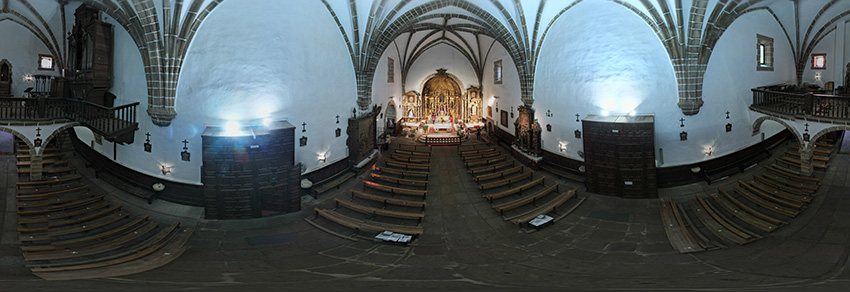
In the Middle Ages two pilgrimage routes going from the centre of Spain to Santiago de Compostela merged in Peraleda. That is the reason why this temple was dedicated to Saint James the Great.
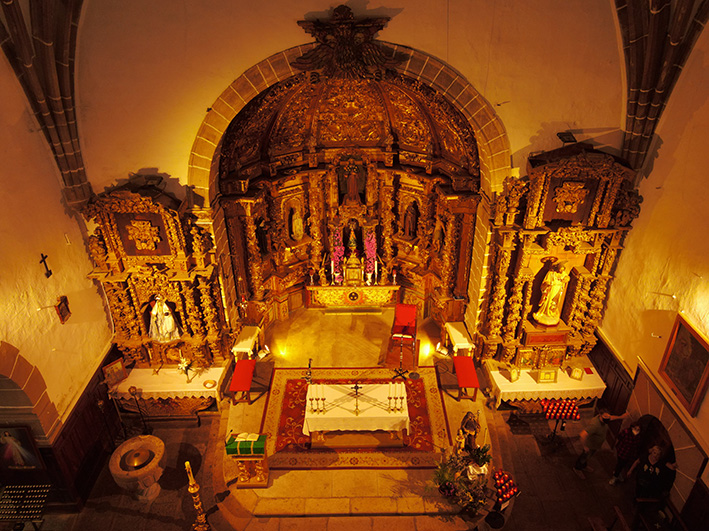
Its oldest part is the stone tower, erected in the 15th century during the reign of the Catholic Monarchs. That tower was part of an interesting network of watchtowers of similar style scattered around the area and connected to the tower of Saint Mary’s Church in its centre. This clever system made possible for a signal or alarm to spread almost instantly using visual or light signals from top to top.
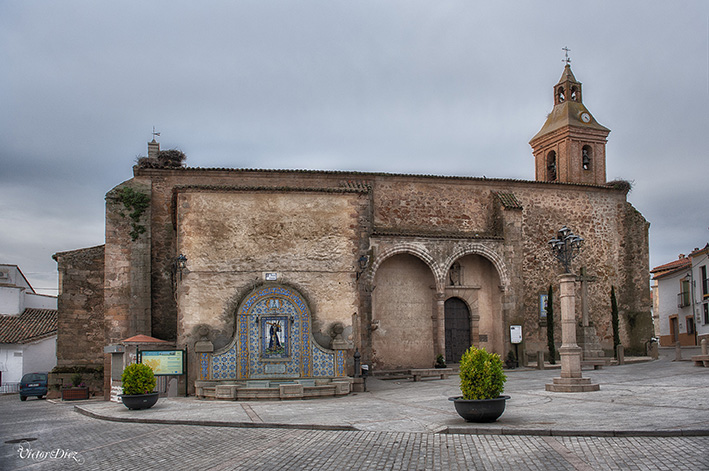
This stone tower also served as a bell tower for a modest chapel servicing the local parishioners. In the Middle Ages the parish church for all the villages in the area was 5 kms north of Peraleda, where the ruins of Saint Mary’s stand today, so Peraleda’s chapel was of a subsidiary and secondary nature. Other little settlements in the area also had St Mary’s as their parish church, so going to Sunday mass was often a very long way to go. These little hamlets, together with Peraleda, made up the Council of La Campana de la Mata (“the bell of the bush”), a collective municipality which was in fact part of the City Council of Plasencia.
The building of this temple started on April 30th 1535 and ended 68 years later, in 1603. Works began at the apse, the side opposite the tower, which allowed the little chapel by the tower to be still in use meanwhile. We can distinguish two phases in the construction, with a standstill in between.
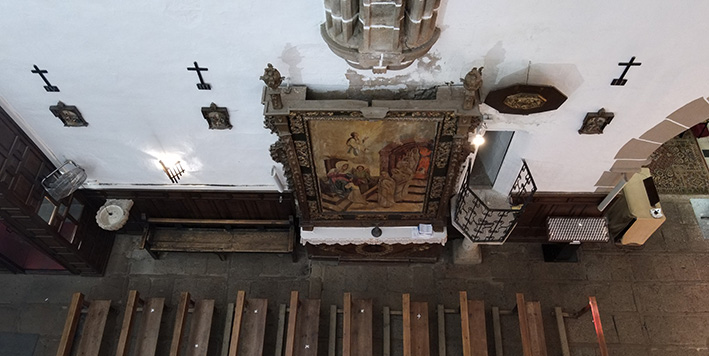
The edifice consists of three sections separated by transverse arches and covered with gothic cross vaults, so the whole weight of the roof concentrates on just 5 arches, supported by exterior buttresses. This allows for very high walls free of charge, just like in a gothic cathedral.
After completion of the first section, works come to a stop and the existing part is refurbished to begin services. So the old chapel is demolished and the mass starts being celebrated in the new temple by an appointed priest assisting the parish priest of St Mary’s.
The difference between this initial section and the other two is subtle but evident and can be discovered from the outside in the roof cornice, the shape of the buttresses, the arrangement of the masonry; and from the inside, in the shape of the vaults. Another important fact gives this away. The porch of the northern entrance shows a change of mind in the design of the church. On its right hand side it fits quite violently into the existing buttress, while flowing smoothly into the other one on its left.

In 1575 the parish priest of St Mary’s, Don Joan Luis of Alba, moves from Valparaiso to Peraleda. This has the consequence of turning Peraleda de facto in the spiritual capital of the area and its growing temple in its parish church. The two last sectors must have been built after this move, advancing to the west until embracing the old tower. This stone tower will add a brick body in the 19th century to improve its use as a watchtower during the great devastations of the Carlist Civil Wars. Later still, in the middle of the 20th century, the tower will further grow up adding a third body of bricks and refurbishing the top to host the Council clock, getting thus the peculiar shape the tower has today.
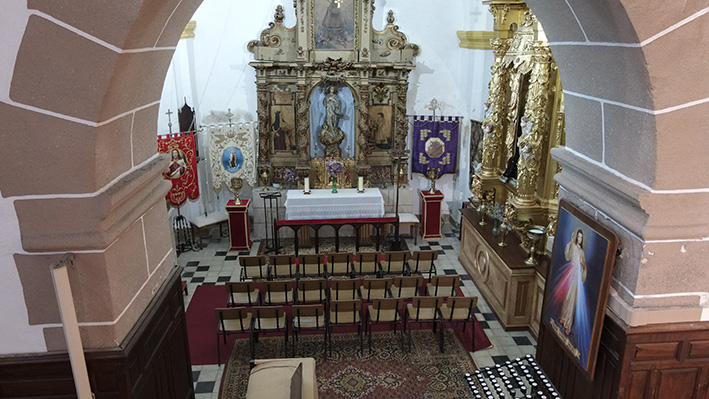
In the 18th century the church gets a Latin-cross layout after the addition of a chapel devoted to St Raymund Nonnatus on the north side, and a sacristy on the south. Also at the south side, we can see a big stone arch attached to the exterior wall. It sheltered the ceremony of The Descent of Jesus from the cross at Easter, where a life-size image of Christ is descended from the cross; still performed today though now inside the temple.
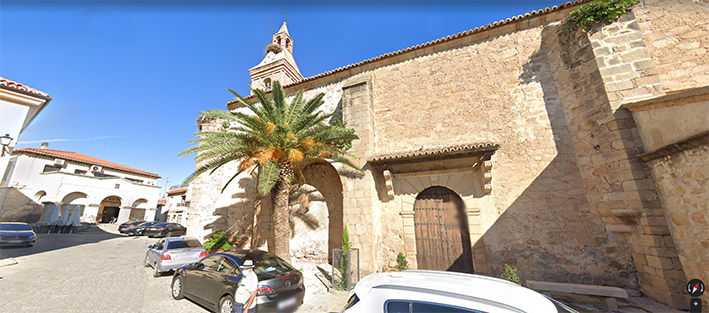
In the same century, in 1704, a new organ was built, by Manuel de la Viña, one of the best pipe organ builders in the Spanish baroque. But what makes this pipe organ so special is that this is the only surviving one from this artist. There are some others in convents and cathedrals, but this is the only one who still preserves the original, so the only one who still sounds as de la Viña meant it to sound. Its state of conservation is not too bad, but it needs an urgent and really expensive restauration if we want this baroque jewel to escape the destruction of time.
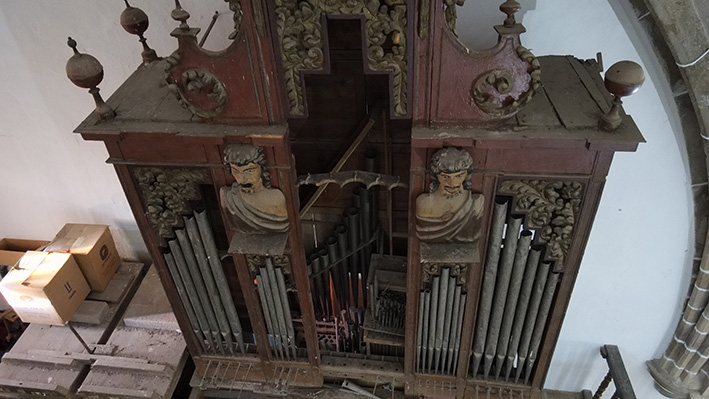
At the interior, an impressive baroque reredos stands out. It was made by a disciple of Churriguera -one of the most important Spanish architects at the time. The design is inspired in the breath-taking altarpiece decorating the Dominican church in Salamanca. Two lateral altarpieces in the same style extend it and round off the Baroque decoration on the eastern side. Less spectacular but more valuable is the altarpiece in the chapel, in a pre-Rococo style.
Behind the main baroque reredos, the most important jewel of this church (and probably of the whole area) is well hidden. We are talking about a Renaissance reredos made in sgraffito in the Italian style, the only of its kind and in a very good state of conservation. (more information here).
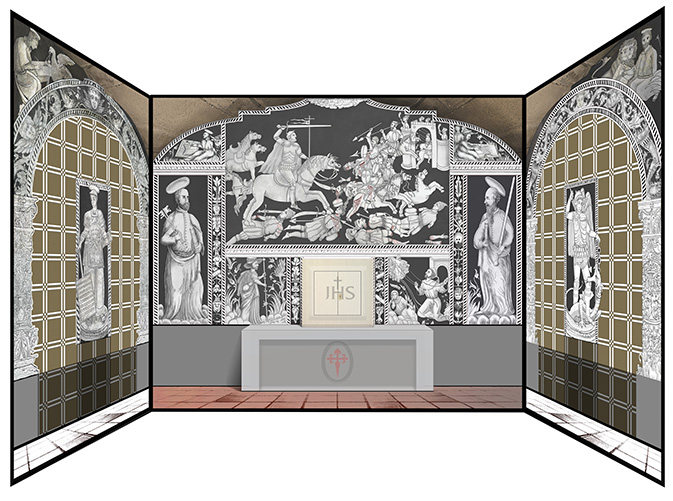
Another highlight is the big painting of The Holy Souls in Purgatory, because being perfectly adjusted to the Catholic doctrine, for those who cannot read the subtle and bald language of the painter, it may well pass for shockingly heretical (more information here).
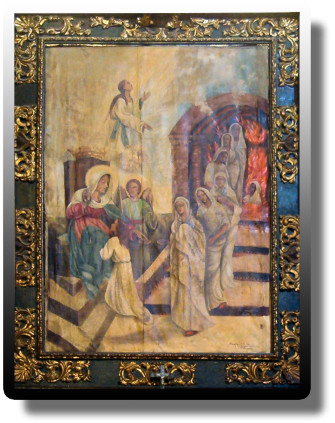
lit up at night:
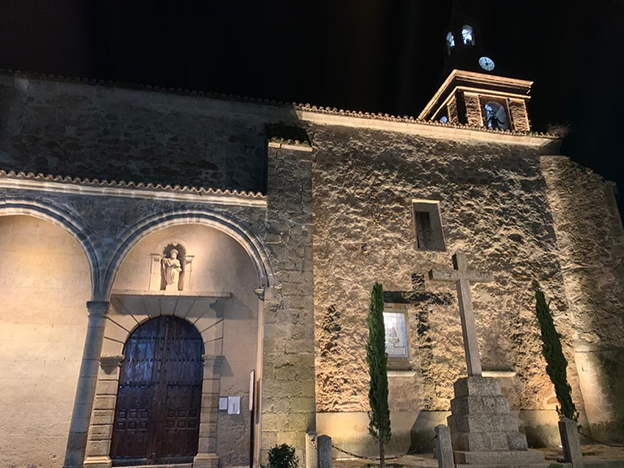
Angels' eye view:
Location:
Escrito por Angel Castaño
With thanks to the photographers who kindly gave us permission to publish their photos. In order of appearance:
1 & 11- M Carmen Romero Delgado
2, 3, 5, 7 & 9- Daniel Bravo
4 & 6- Víctor Díez


